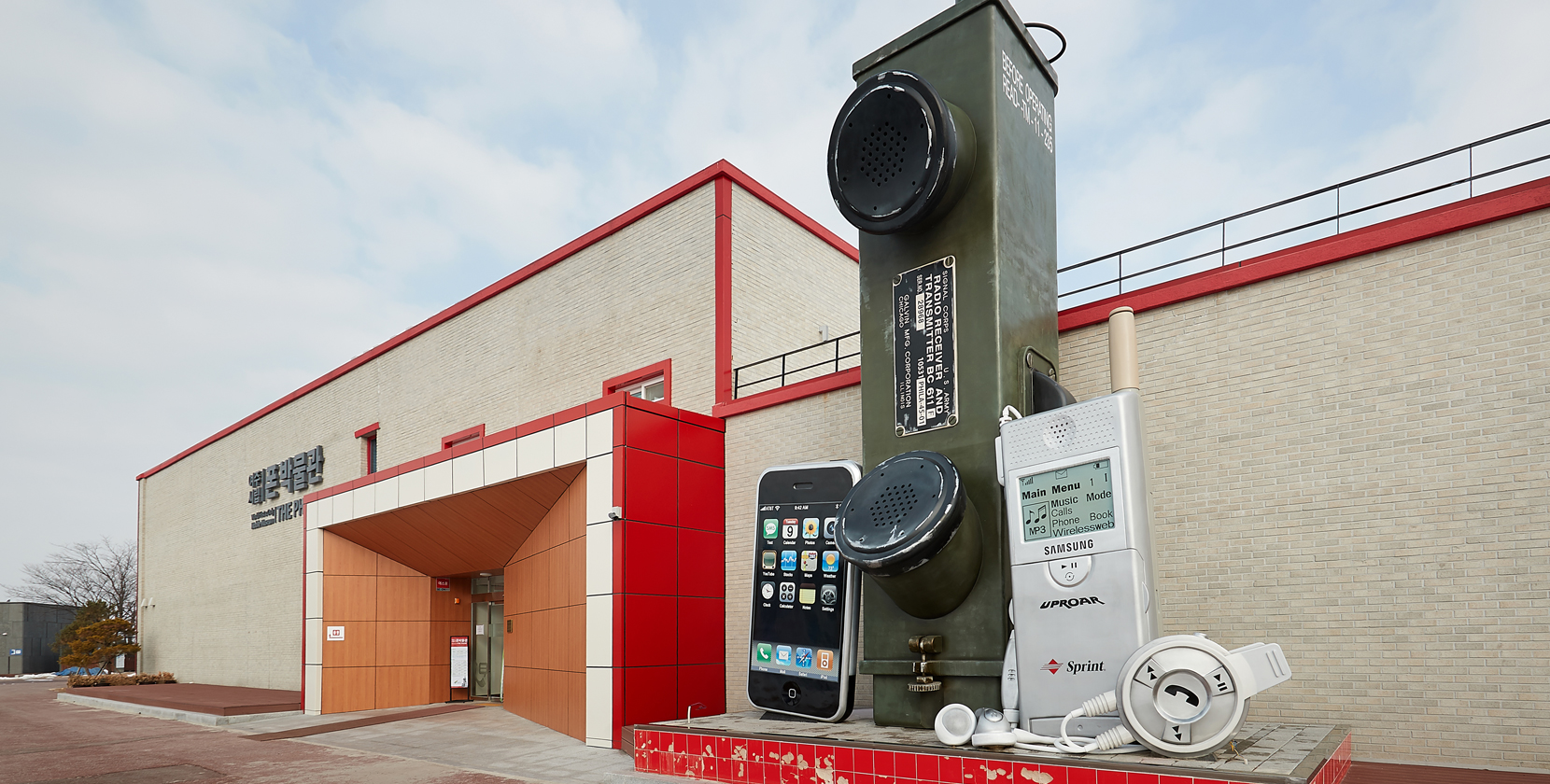
Chronology of Mobile Phones
The mobile phone is one of the inventions that most dramatically changed our lives. It added mobility to the telephones otherwise available only at home or offices, allowing people to talk on the phone even when they are on the move. As a result of the subsequent advancement, we are now living in a worldwhere we can handle most of our everyday chores with a smartphone. The Phone Museum in Yeoju provides a panoramic history of mobile phones, which continue to show progress.

History Hall with Chronology of Mobile Communications
From the first-generation cell phones to the most recent smartphones,
the Phone Museum displays over 3,300 cell phones as the world’s only museum dedicated to mobile phones.
The museum dates back to 2008, when its director Byeong-cheol Lee renovated a portion of his own house to open a private exhibition space.
Later, in response to a proposal made by the City of Yeoju, Mr. Lee donated the cell phones he had collected for years to the city.
In the summer of 2016, his museum turned into a city museum that attracts a number of visitors on weekends as a local attraction.


The museum consists of four thematic sections.
Once inside the building, visitors find the History Hall on the right side.
This hall provides the long history of telecommunications.
The exhibits include interesting stories about Morse code, the starting point of communication; the water microphone invented by Alexander Bell,
who also invented the world’s first telephone; and the magnetic telephone introduced for the first time in Korea in 1896.
The world’s first portable telephone is known to be Handy Talky, a military telephone.
At the museum building’s entrance is installed a gigantic sculpture of the device.
Following this initial type, beepers and car phones as well as a wide variety of portable phones began to be developed.

History Hall helps visitors look at the history of mobile communication from the first to fourth generation at a glance.
Korea’s competitiveness as a powerhouse for the mobile technology is demonstrated by ETRI’s electronic switching system (TDX-1),
which opened a new chapter for the landline telephone service in Korea, as well as the CDMA technology.
In addition, the cell phone first used in Korea just before the Olympic Games held in 1988 and
the development of mobile telecommunication technologies showcase the progress of mobile technology from the first to fourth generation.
This exhibition hall invites visitors to learn and understand the history of mobile phones over the past few decades during
which a least developed country became a leading technological power in mobile telecommunications.
Theme Hall with 22 Interesting Topics
Theme Hall parades a total of 22 intriguing topics.
Displayed in this space are interesting phones from the past,
some that are particularly nostalgic to certain visitors, such as Korea’s first phone to be exported;
luxury phones created in collaboration with designer brands, and gamer-friendly phones for more convenient enjoyment.

In particular, the display created with the theme 'From bottom to top mobile phone technology'
shows how Korea, a nation with virtually no cell phone technology,
had to make a phone by disassembling and copying foreign products, and
how that country eventually secured the world’s leading smartphone technology.
This section goes beyond simply explaining the fact that Korea’s sophisticated smartphone technology is leading the global industry.
Instead, it teaches visitors, especially children, the process in which
countless researchers and companies made devoted efforts to hold the top technology.


The section titled 'Cultural heritage of industrial technology for future Korea' exhibits the signature phones that made history in Korea.
This represents the goal of this phone museum to place mobile phones,
a revolutionary legacy of industrial society, on the rank of cultural heritage.
Visitors will also have fun with the endless stories about cell phones,
including the world’s thinnest phone in Guinness World Records, a phone that looks like a watch,
and the world’s largest installation-type phone made by Samsung.
Family Hall with Panoramic View of Past Phones
The heart of the Phone Museum is Family Hall, whose 35-meter-long wall is covered
with actual beepers and cell phones made in Korea, in chronological order.
Since this wall resembles a mural painted with mobile phones, it is particularly popular among photo-taking visitors.
One way to enjoy this wall is to find a phone that a visitor has used before on the wall illustrating the wave of mobile phone history.

Befitting its name, Family Hall offers scores of amusing elements for visitors of all ages.
The central space is designated as a Kids Zone, displaying various phones with animated characters appealing to children.
Although landline phones are not used often in an era where everyone seems to have their own smartphone,
young visitors will be surely attracted to the cute devices.
One side of the exhibition hall is reserved for exhibits that will instantly remind adult visitors of their childhood days,
such as telephone switchboards and extremely old telephones.
The last part of the tour is Epilogue Zone.
The large touchscreen provides informative stories about the 'Six networks that changed the world'
and 'The 100 most important mobile phones in history.'
As its name suggests, this space pieces together the content learned at History Hall, Theme Hall, and Family Hall.


From the history of telephone and mobile communication to the cell phones displayed for various themes,
the Phone Museum is worth a weekend visit to look at, feel, and learn everything about cell phones.
The establishment will guarantee an amusing travel in time for adult visitors,
while younger visitors will enjoy learning about the history of mobile phones









